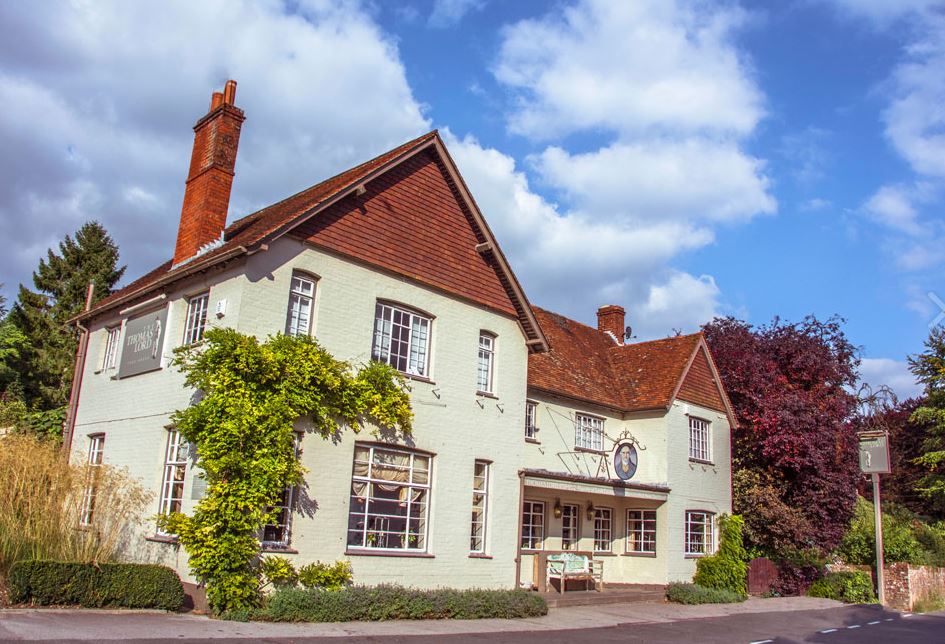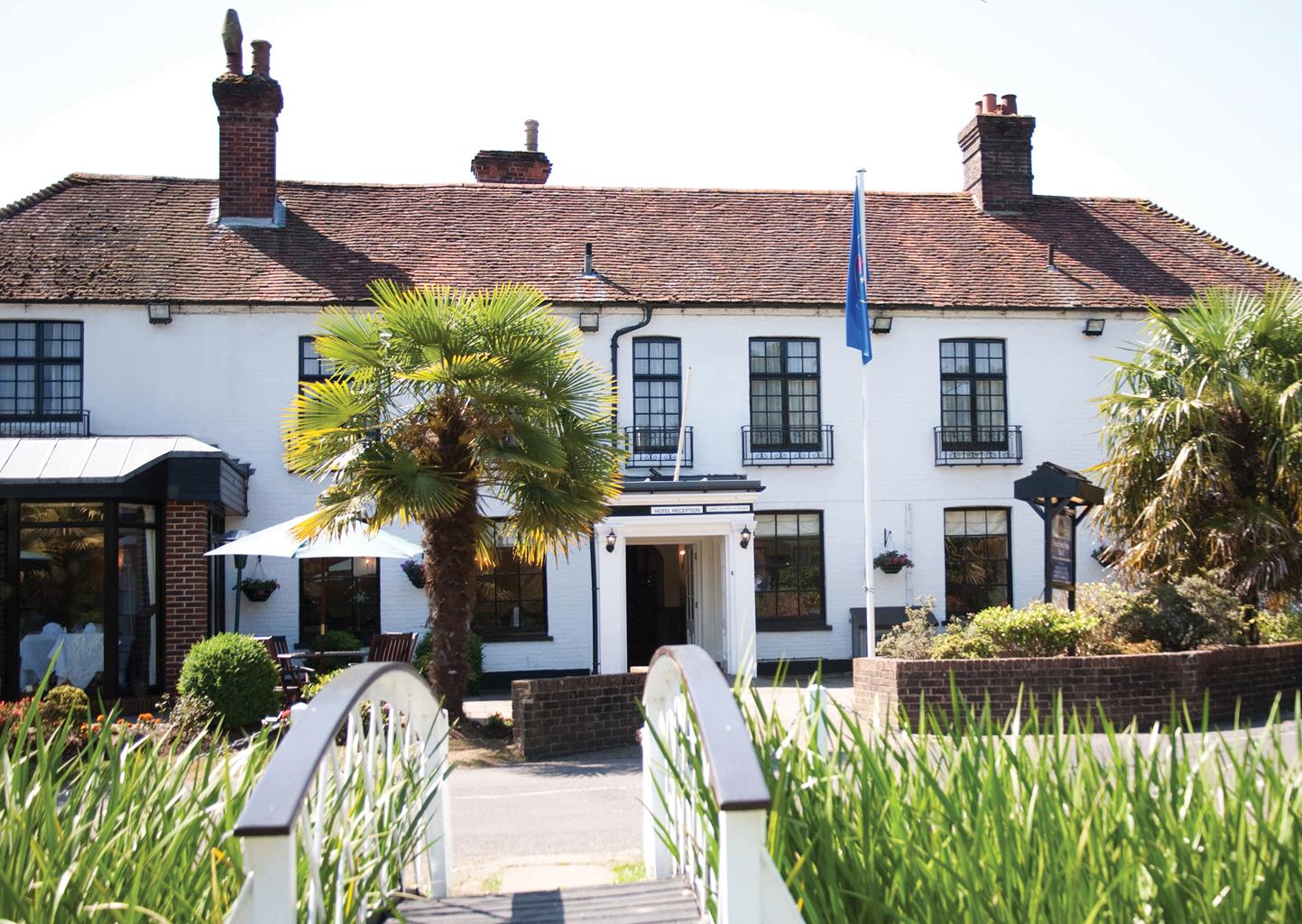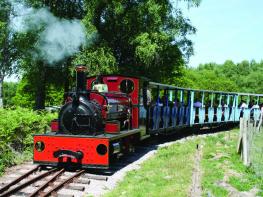Inadown Farm Holiday Homes are five well-presented holiday homes designed to offer a relaxing…
Selborne - in Gilbert White's footsteps

Through the glorious beech hangers and tranquil meadows that so inspired the eminent naturalist Gilbert White.
3.7 miles (5.9kms)
About the walk
Selborne, and its beautiful surrounding countryside, were made famous over two centuries ago by the writings and reputation of the clergyman and pioneer naturalist Gilbert White who published The Natural History and Antiquities of Selborne in 1789. Based on 40 years of observation and meticulous recording of the flora and fauna around the village, it is one of the few books on natural history to gain the rank of an English classic. White poetically describes his day-to-day experiences of nature in the Hampshire countryside through a series of letters to his friends Thomas Pennant and Daines Barrington.
Local boy
Born in the village in 1720, White was the grandson of the vicar of Selborne, and, having been ordained after attending Oxford, he returned to live in the village to serve as a curate at neighbouring parishes and at Selborne in 1751. From the age of ten until his death in 1793 he lived at The Wakes, a large rambling house that overlooks the village green (the Plestor) and church.
Although the village has changed, White would find the surrounding landscape that he knew and loved so well largely unspoilt and now preserved by the National Trust. This walk literally follows in White’s footsteps, exploring the lofty, beech-clad hills or ‘hangers’ that rise steeply behind his home, and the lush ‘lythes’ or meadows beyond St Mary’s church, both beautiful areas through which he would stroll and passionately observe and note the wildlife around him. The walk comprises two loops around the village, so if you are short of time (or energy) you can enjoy the classic climb on to Selborne Common and still have time to visit Gilbert White’s home, now a museum.
Up the Zig-Zag path
The walk begins with a long ascent to the top of Selborne Hill and Common, made easier by the work of Gilbert White and his brother John in 1753, when they constructed the Zig-Zag path up the steep scarp face. White described the Common as ‘a vast hill of chalk, rising three hundred feet above the village; and is divided into a sheep down, the high wood, and a long hanging wood called The Hanger’. You are rewarded with peace and tranquillity when you reach White’s Wishing Stone, and magnificent views over the village.
The main route threads through the glorious beech hangers to White’s favourite viewpoint. Back in the village, locate White’s grave in the churchyard and visit St Mary’s church. Here you will find White’s fine memorial window depicting St Francis of Assisi preaching to 82 birds, which are mentioned in his book. The second loop heads east through the Oakhanger Valley, following the Hangers Way to Priory Farm, the site of Selborne Priory.
Walk directions
Take the arrowed footpath, signed ‘Zig Zag Selborne Common’, by the car park entrance, and gently ascend to a gate at the base of Selborne Common. Bear left to follow the impressive Zig-Zag path uphill, pausing at regular intervals to admire the unfolding view across the village. At a T-junction near a metal bench turn left to continue upward on the steps.
At the top, take the stepped path right and, in a few paces, keep right at a fork to follow the lower path through the beech hangers. Shortly after, look for a metal bench by a path ascending from the right, and savour the splendid view of the church and The Wakes through the gap in the trees. Continue along the main path, descending to a junction of paths, by a National Trust sign.
Turn right along a track, then, where this curves left, bear off right across a stile into pasture. Keep to the left-hand edge, cross three more stiles and follow the enclosed path to a lane. Turn right and follow it back into the village.
Cross the B3006 up a gravel driveway and through the right-hand gate into the churchyard. Follow the defined path, marked as Hangers Way, to a footbridge over the Oakhanger Stream.
Keep to the Hangers Way through a gate and along the edge of meadowland to a pair of kissing gates, then enter the Long Lythe and pass below a stretch of woodland to a kissing gate and fork of paths, which is within 22yds (20m) of entering the meadow.
Fork right leaving the Hangers Way and passing between ponds. Eventually pass alongside a fence to a stile on the edge of Coombe Wood. Turn left over a stile and then over a plank bridge. Follow the path inside the wood to another stile, then bear left along the field edge to a metal kissing gate and turn right along a bridleway towards Priory Farm. Go through the gate, into the farmyard, and keep to the right through another gate and onto a metalled drive.
In a few paces, where the drive curves left, bear right along the waymarked track. Go through a metal gate and follow the grassy track along the left-hand side of the field edge, eventually reaching a gate and woodland. Follow the track (which can be muddy) through beech woodland. Leave the wood, passing a house called Dorton’s Cottage, and climb the lane steeply back to Selborne, turning left for the car park.
Additional information
Woodland, field paths, stretch of road, 7 stiles
Lofty beech hangers, lush rolling pasture and woodland
Dogs should be kept under control at all times
OS Explorer OL33 Haslemere & Petersfield
Car park behind The Selborne Arms
At car park in Selborne
WALKING IN SAFETY
Read our tips to look after yourself and the environment when following this walk.
Find out more
Also in the area
About the area
Discover Hampshire
Hampshire’s varied landscape of hills and heaths, downlands and forests, valleys and coast is without rival in southern England. Combine these varied landscapes and terrains with secluded and idyllic villages, complete with thatched and timber-framed cottages and Norman churches, elegant Georgian market towns, historic ports and cities, restored canals and ancient abbeys, forts and castles, and you have a county that is paradise for lovers of the great outdoors.
If you’re a walker, stride out across the high, rolling, chalk downland of the north Hampshire ‘highlands’ with far-reaching views, walk through steep, beech-clad ‘hangers’ close to the Sussex border. Or perhaps take a gentler stroll and meander along peaceful paths through unspoilt river valleys, etched by the sparkling trout streams of the Test, Itchen, Avon and Meon. Alternatively, wander across lonely salt marshes and beside fascinating coastal inlets or, perhaps, explore the beautiful medieval forest and heathland of the New Forest, the jewel in Hampshire’s crown.
Nearby stays
Restaurants and Pubs
Nearby experiences
Recommended things to do
Why choose Rated Trips?
Your trusted guide to rated places across the UK
The best coverage
Discover more than 15,000 professionally rated places to stay, eat and visit from across the UK and Ireland.
Quality assured
Choose a place to stay safe in the knowledge that it has been expertly assessed by trained assessors.
Plan your next trip
Search by location or the type of place you're visiting to find your next ideal holiday experience.
Travel inspiration
Read our articles, city guides and recommended things to do for inspiration. We're here to help you explore the UK.














